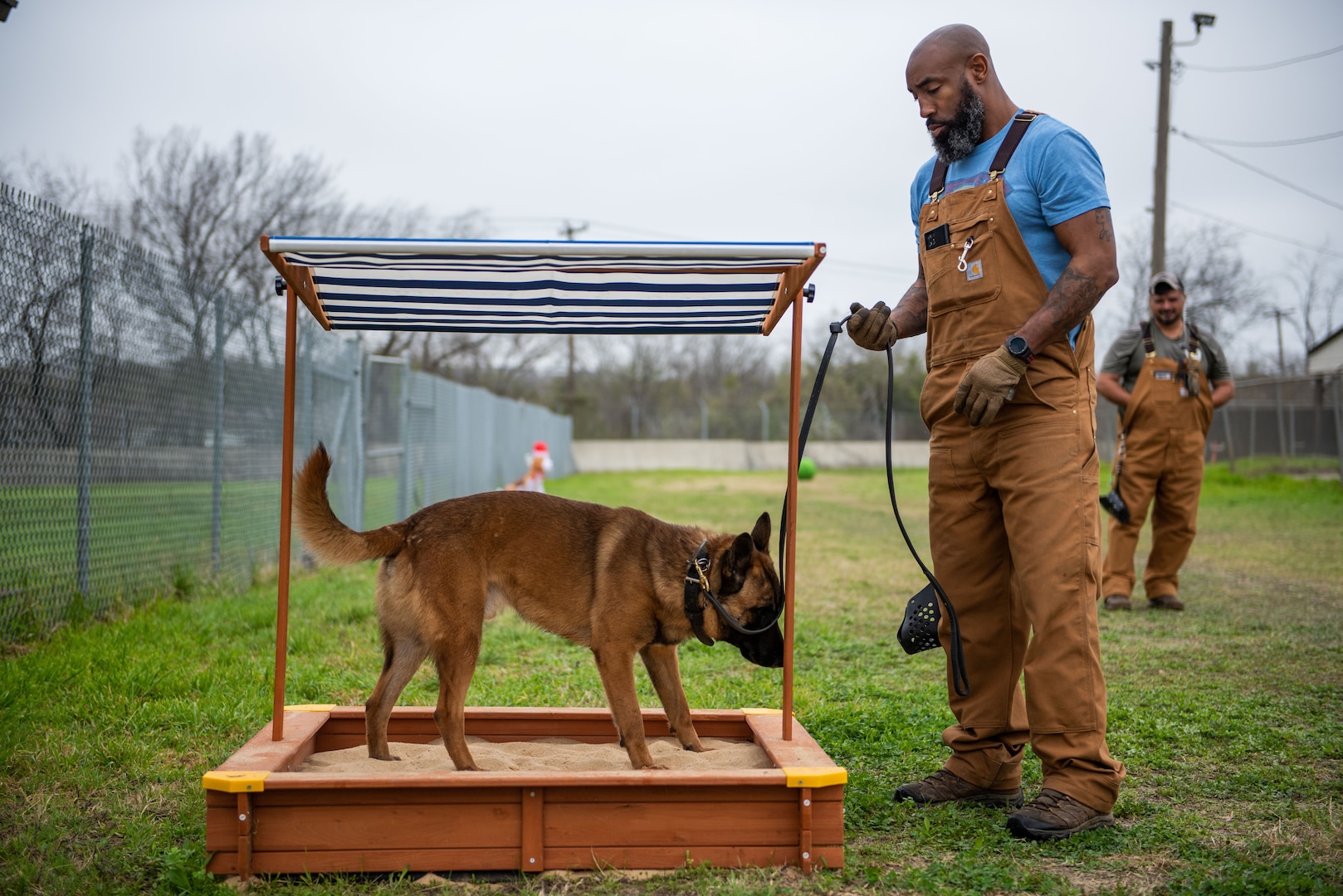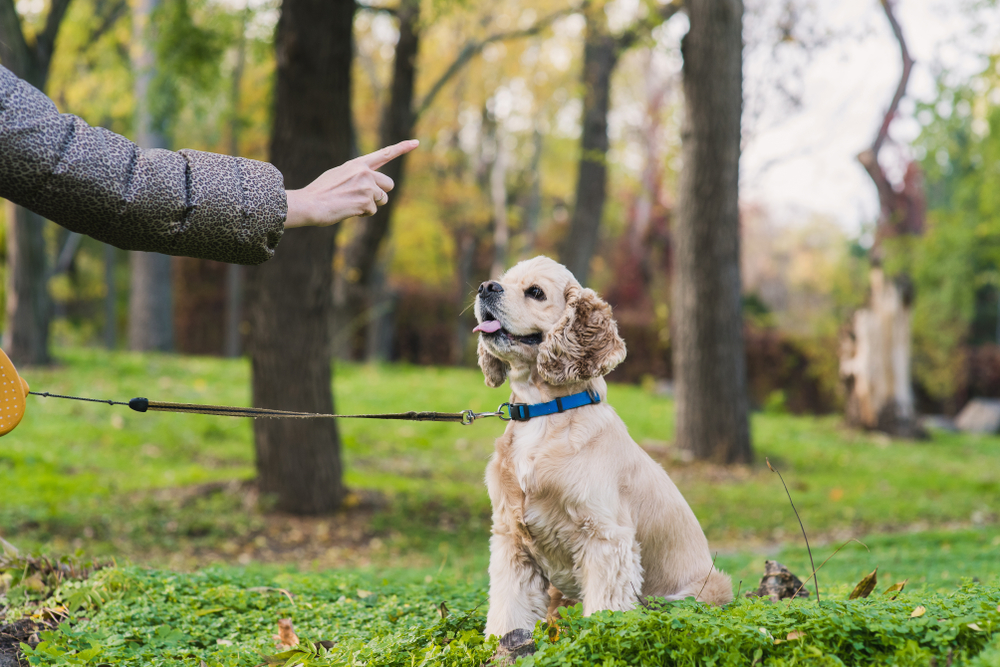Advanced Obedience Training Strategies for a Well-Mannered Dog
Advanced Obedience Training Strategies for a Well-Mannered Dog
Blog Article
Check Out the Various Sorts Of Pet Dog Training Available for Your Furry Good Friend
Comprehending the various types of dog training is important for improving your canine companion's actions and promoting a more powerful bond. From standard obedience to sophisticated techniques such as dexterity and scent work, each training method provides unique benefits customized to both the pet dog's and owner's requirements.
Basic Obedience Training
Fundamental obedience training lays the structure for a well-behaved pet dog, establishing the phase for an unified partnership between pet dog and proprietor. This necessary training focuses on teaching pets essential commands such as rest, remain, come, down, and heel. These commands not only improve interaction yet also advertise safety in different settings.
The training process typically starts with positive support techniques, where rewards such as deals with or appreciation are used when the canine efficiently adheres to a command. This method urges a favorable learning ambience, ultimately fostering depend on in between the pet dog and the proprietor. Consistency is vital; routine practice guarantees that the canine preserves commands over time.
Furthermore, fundamental obedience training aids to address common behavioral problems, such as leaping, barking, or drawing on the leash. By developing clear borders and expectations, owners can reduce undesirable habits and improve their pet dog's socializing skills.

Advanced Training Methods
Advanced training strategies build on the foundational abilities established in standard obedience training, offering a pathway to boost a canine's abilities and responsiveness. These methods often entail specialized abilities and commands, allowing pet dogs to do tasks that need greater degrees of focus and intelligence.
One preferred technique is dexterity training, where canines browse challenge courses, improving their physical control and mental sharpness. This not only gives physical exercise but also enhances the bond in between pet dog and handler via teamwork and communication.
Another sophisticated technique is scent work, which take advantage of a pet dog's all-natural olfactory capacities. This training urges dogs to identify and locate particular fragrances, enhancing their focus and problem-solving skills. Such tasks can be specifically beneficial for breeds inclined to tracking.
Solution pet training is another important location, where canines discover to aid people with disabilities. This training requires a high level of obedience and specialized skills tailored to the particular demands of their trainers.
Therapy Methods
Effective canine training prolongs beyond instructing abilities and commands; it likewise includes therapy approaches that attend to undesirable actions. These techniques are important for fixing concerns such as hostility, too much barking, and separation anxiety, ensuring a harmonious partnership between pets and their proprietors.
One commonly acknowledged method is positive reinforcement, which entails fulfilling desired habits to urge their recurrence. This method is effective in strengthening excellent practices while decreasing worry or stress and anxiety in the pet. Conversely, aversive methods, such as penalty or negative reinforcement, are normally discouraged by experts as a result of their possible to produce fear and anxiety, causing more behavior problems.
Another essential method is desensitization, which slowly subjects pet dogs to the stimulations that provoke unwanted actions in a regulated fashion. This process assists pet dogs discover to stay tranquil and made up in situations that would normally activate stress and anxiety or aggressiveness.
Counter-conditioning is frequently utilized combined with desensitization, where the pet dog finds out to link favorable experiences with formerly unfavorable stimuli. Both strategies require patience and consistency, making them reliable devices for attaining long-lasting behavioral adjustment. By using these therapy approaches, pet dog proprietors can promote a delighted and well-adjusted canine buddy.
Specialized Training Programs
In the realm of pet training, specialized training programs satisfy certain requirements and goals, offering tailored techniques that improve a canine's capacities and address special difficulties. These programs are designed for numerous purposes, consisting of service pet training, therapy pet prep work, and even affordable sports training.
Solution canine training concentrates on equipping pets with the abilities necessary to help people with disabilities, such i loved this as directing visually damaged owners or alerting to medical emergency situations. This training is extensive and typically requires a combination of obedience, socialization, and details task-oriented skills.
Treatment pet dog programs aim to prepare dogs for emotional assistance functions in healthcare facilities, schools, and nursing homes. These pet dogs must show calmness, sociability, and a gentle demeanor, ensuring they can supply comfort to those in distress.
Furthermore, affordable sports training, such as agility or obedience trials, highlights physical conditioning, precision, and synergy in between the dog and handler. These programs require a high level of dedication and practice, promoting a strong bond while sharpening my sources the dog's sports abilities.
Enjoyable and Interactive Training Tasks
Exactly how can pet dog training be both effective and enjoyable? The solution depends on incorporating fun and interactive training activities that promote your canine's mind while enhancing important abilities. Involving your dog through play not only enhances the bond between you and your hairy close friend but also enhances their discovering experience.
One effective way to achieve this is through agility training, where pet dogs navigate obstacle courses that challenge their physical and mental abilities. This activity encourages analytical and boosts coordination, making it a superb selection for energetic types. One more alternative is making use of problem toys that dispense deals with, which can maintain your pet emotionally involved and motivated to discover.
In addition, including right here video games like bring or hide-and-seek can make training sessions much more dynamic. These tasks urge the pet to reply to commands in a fun context, advertising obedience while enabling social interaction.

Final Thought
In verdict, numerous kinds of pet training are crucial for enhancing canine behavior and fostering a solid human-animal bond. Discovering these diverse training options equips dog proprietors with the devices essential to grow all-round, delighted, and obedient companions.
Comprehending the various kinds of pet training is necessary for improving your canine buddy's behavior and cultivating a more powerful bond. From fundamental obedience to sophisticated techniques such as dexterity and aroma job, each training technique offers unique benefits customized to both the pet dog's and owner's demands.Basic obedience training lays the structure for a well-behaved canine, establishing the stage for a harmonious relationship in between pet and proprietor.The training process normally begins with favorable reinforcement techniques, where incentives such as treats or appreciation are used when the pet efficiently complies with a command.In verdict, various kinds of pet dog training are necessary for improving canine behavior and promoting a strong human-animal bond.
Report this page